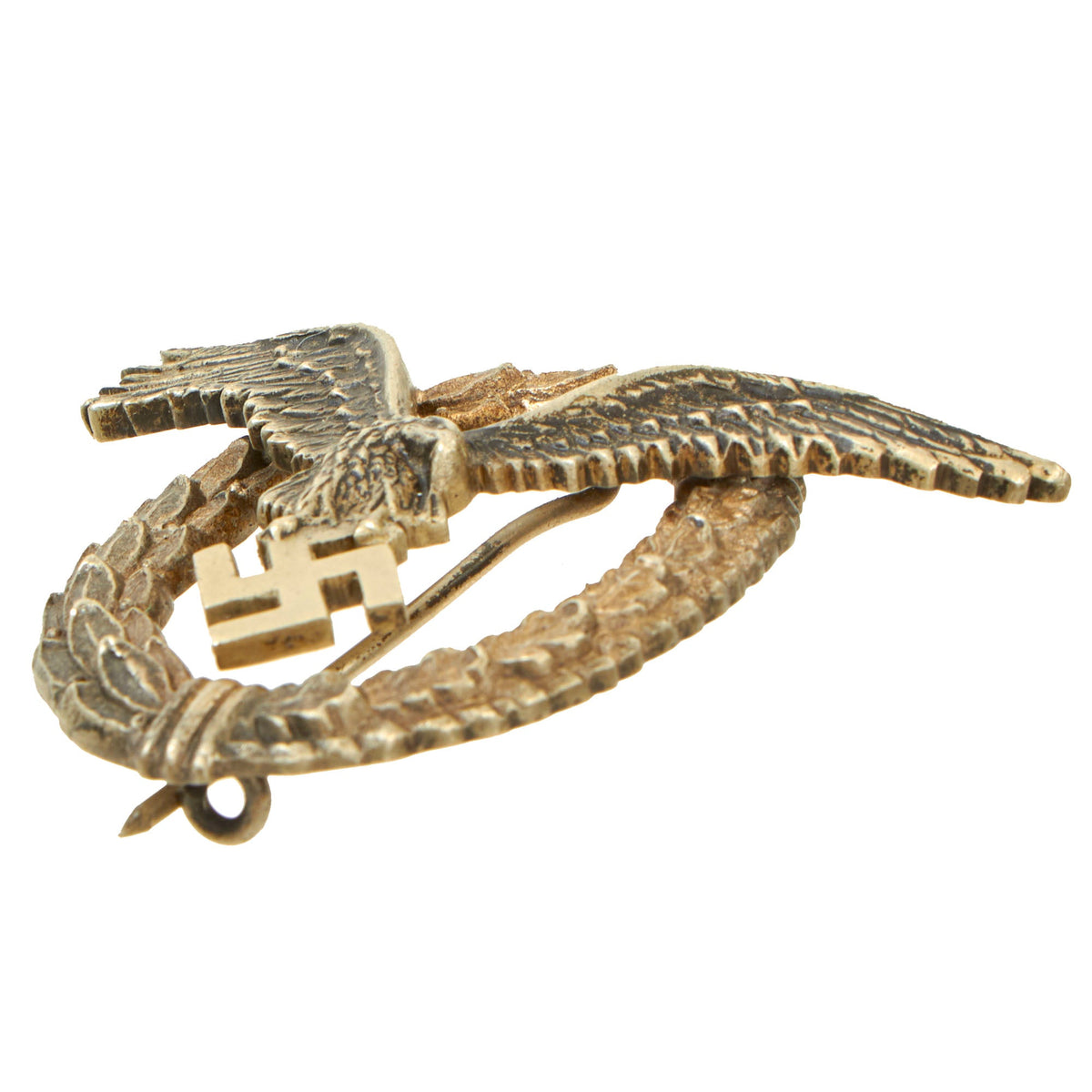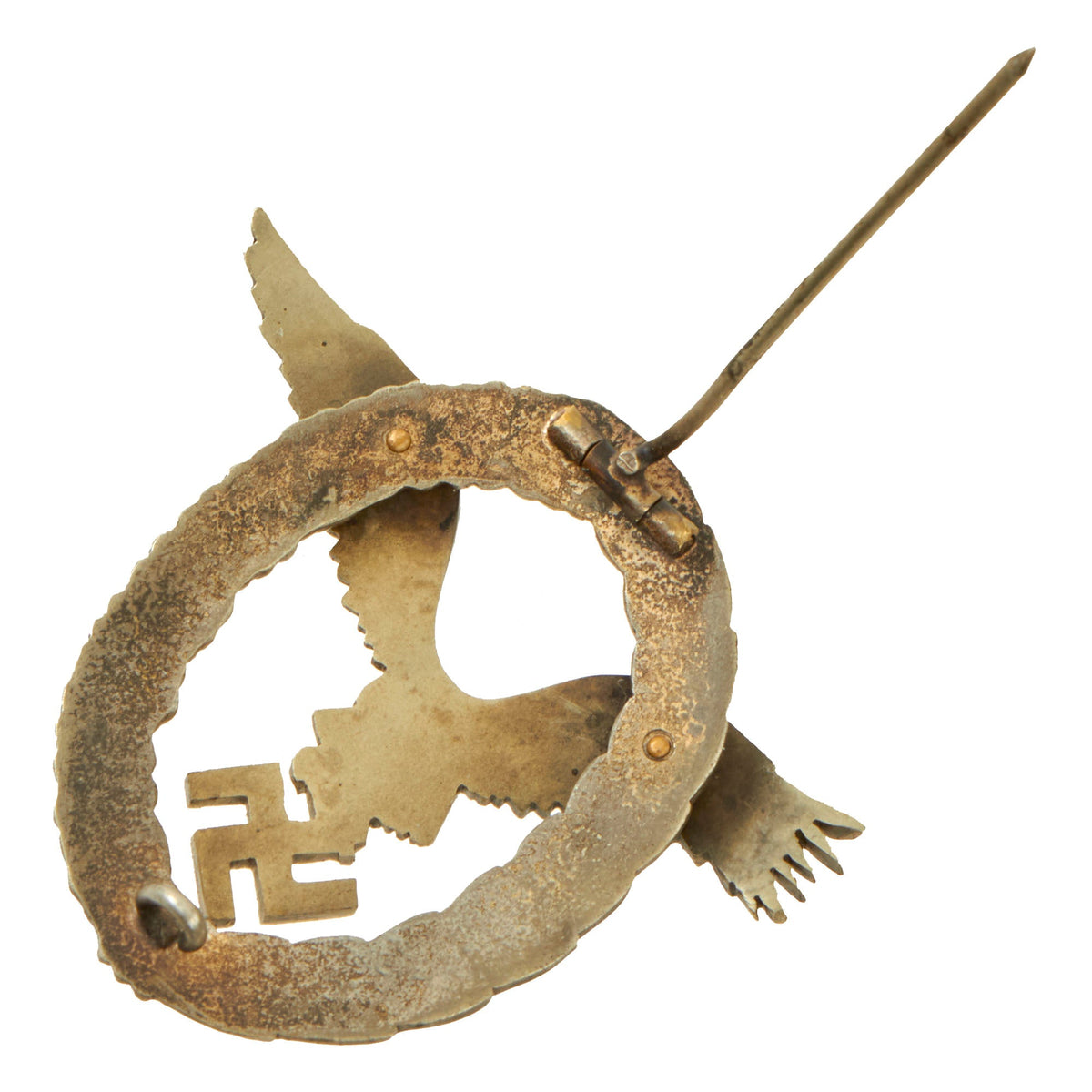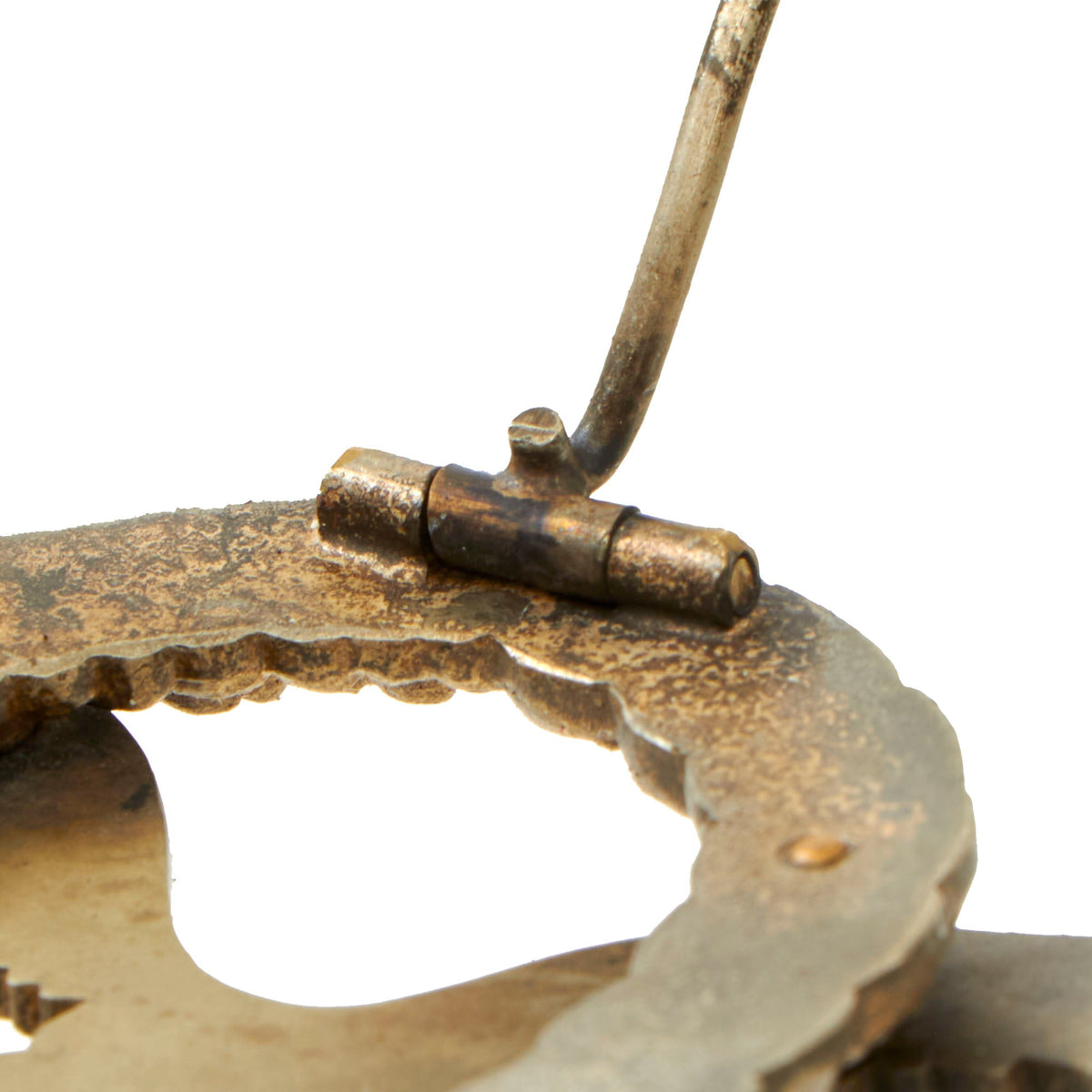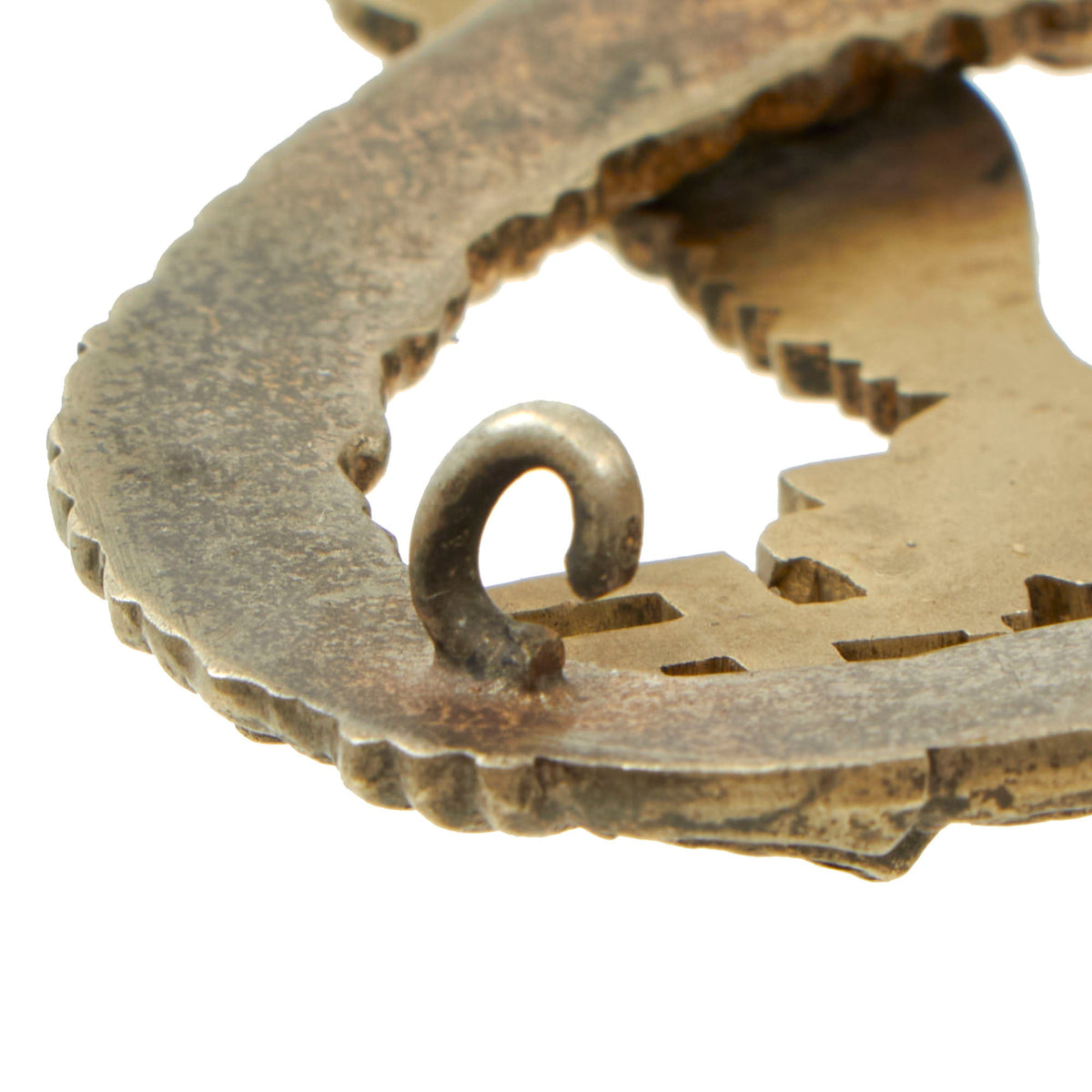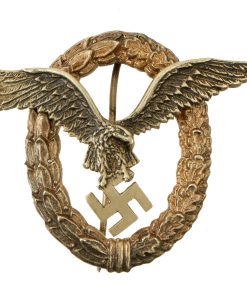Original German WWII Early Tombak Luftwaffe Pilot’s Badge – Unmarked C.E. Juncker – Flugzeugführerabzeichen Original Items
$ 1.095,00 $ 273,75
Original Items: Only One Available. This is an excellent lightly patinated Luftwaffe Pilot’s Badge, which looks to be of early war Tombak alloy construction. The “swooping eagle” is held on by the two brass rivets, and the wreath still retains almost all of the original silver wash. This is really a great example of an early badge!
There is no maker mark on the back, however the style of the construction and pinback indicate that it was almost certainly made by the famous C.E. Juncker of Berlin. This firm was well-known for having made unmarked examples during the war, and you can compare it with a marked example that we have offered previously here: C.E. Juncker Pilot Badge.
Condition is very good, showing a lovely patina of age but no major wear or damage. This is how they are SUPPOSED to look!
A good chance to pick up a great early tombak example of a classic Luftwaffe badge, attributed to a legendary maker!
The Luftwaffe Aviator / Pilot Badge (Flugzeugführerabzeichen or Pilotenabzeichen) was a World War II German military decoration awarded to Luftwaffe service personnel who completed flight training, receiving their flying license and citation. It was instituted on 26 March 1936 by the Commander in Chief of the Luftwaffe Hermann Göring. It came in distinct types; nickel silver (changed to zinc during the war) and a variant made of gold. It depicts a silver eagle (Silberner Adler) perched atop a swas (hook cross), wings open in a landing pose, and surrounded by a wreath with laurel (Lorbeer) on the right side and oak leaf (Eichenlaub) branches on the left side, respectively. It was worn on the lower part of the left breast pocket of the service tunic, underneath the Iron Cross 1st Class if awarded.
The design is two part, with the eagle attached to the wreath by two rivets. The badge can be distinguished from the very similar Pilot/Observer Badge by the wreath; the Pilot’s Badge has a silver wreath, while the Pilot/Observer badge has a gold wreath.
Fast Shipping with Professional Packaging
Thanks to our longstanding association with UPS FedEx DHL, and other major international carriers, we are able to provide a range of shipping options. Our warehouse staff is expertly trained and will wrap your products according to our exact and precise specifications. Prior to shipping, your goods will be thoroughly examined and securely secured. We ship to thousands clients each day across multiple countries. This shows how we're dedicated to be the largest retailer on the internet. Warehouses and distribution centres can be located throughout Europe as well as the USA.
Note: Orders with more than one item will be assigned a processing date depending on the item.
Before shipping before shipping, we'll conduct a thorough inspection of the items you have ordered. Today, the majority of orders will be delivered within 48 hours. The delivery time will be between 3-7 days.
Returns
The stock is dynamic and we cannot completely manage it because multiple stakeholders are involved, including our factory and warehouse. So the actual stock may alter at any time. It's possible that you may not receive your order once the order has been made.
Our policy is valid for a period of 30 days. If you don't receive the product within 30 days, we are not able to issue a refund or an exchange.
You can only return an item if it is unused and in the same state as the day you received it. You must have the item in its original packaging.
Related products
Uncategorized
Uncategorized
Band of Brothers ORIGINAL GERMAN WWII Le. F.H. 18 10.5cm ARTILLERY PIECE Original Items
Uncategorized
Uncategorized
Armored Burgonet Helmet & Polearm from Scottish Castle Leith Hall Circa 1700 Original Items
Uncategorized
Uncategorized
Uncategorized
Uncategorized
Angolan Rebel 1970s era 60mm Inert Display Mortar from Angolan Civil War Original Items
Uncategorized
Uncategorized
Uncategorized
Uncategorized
Uncategorized
Uncategorized
Uncategorized
Uncategorized
Uncategorized


